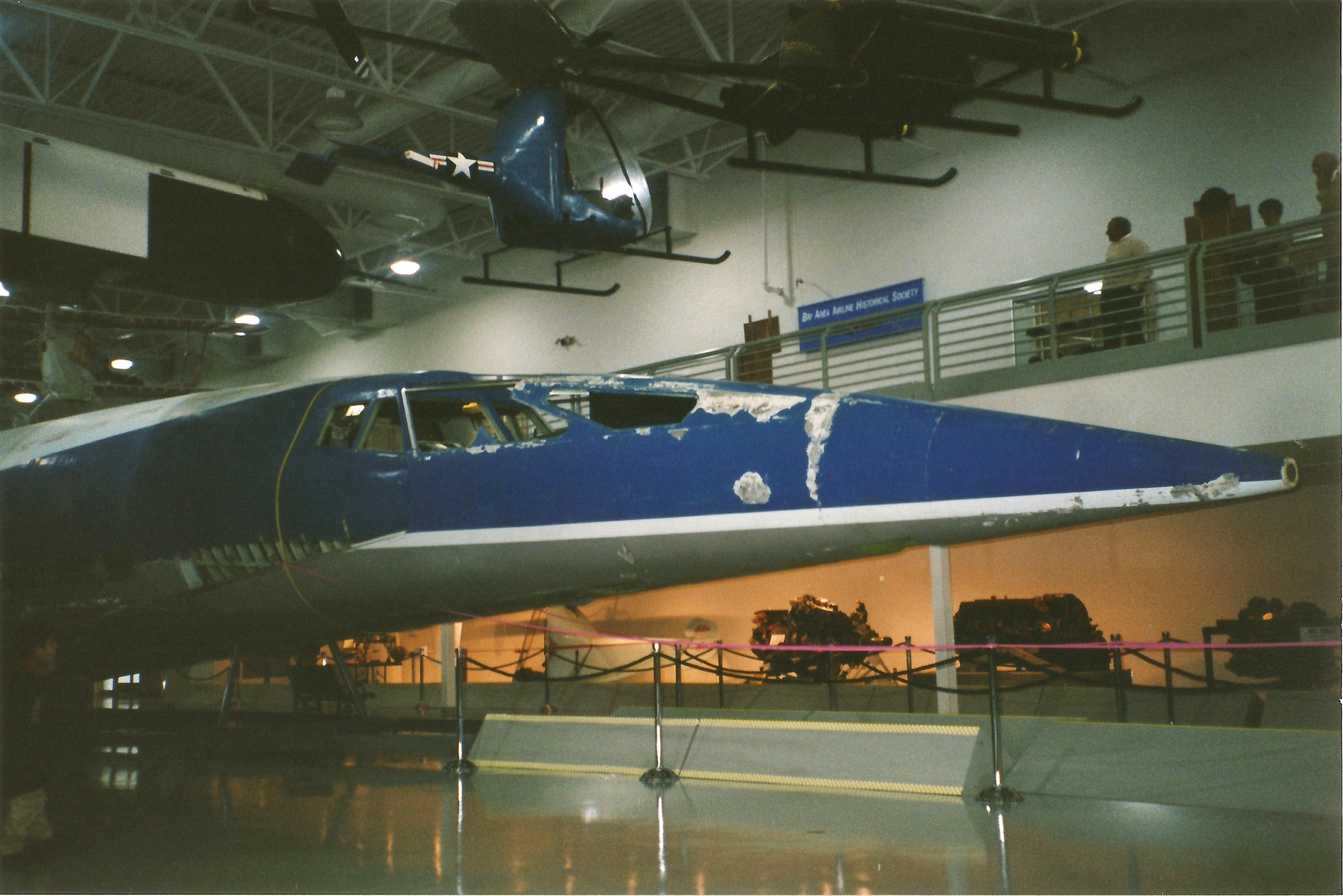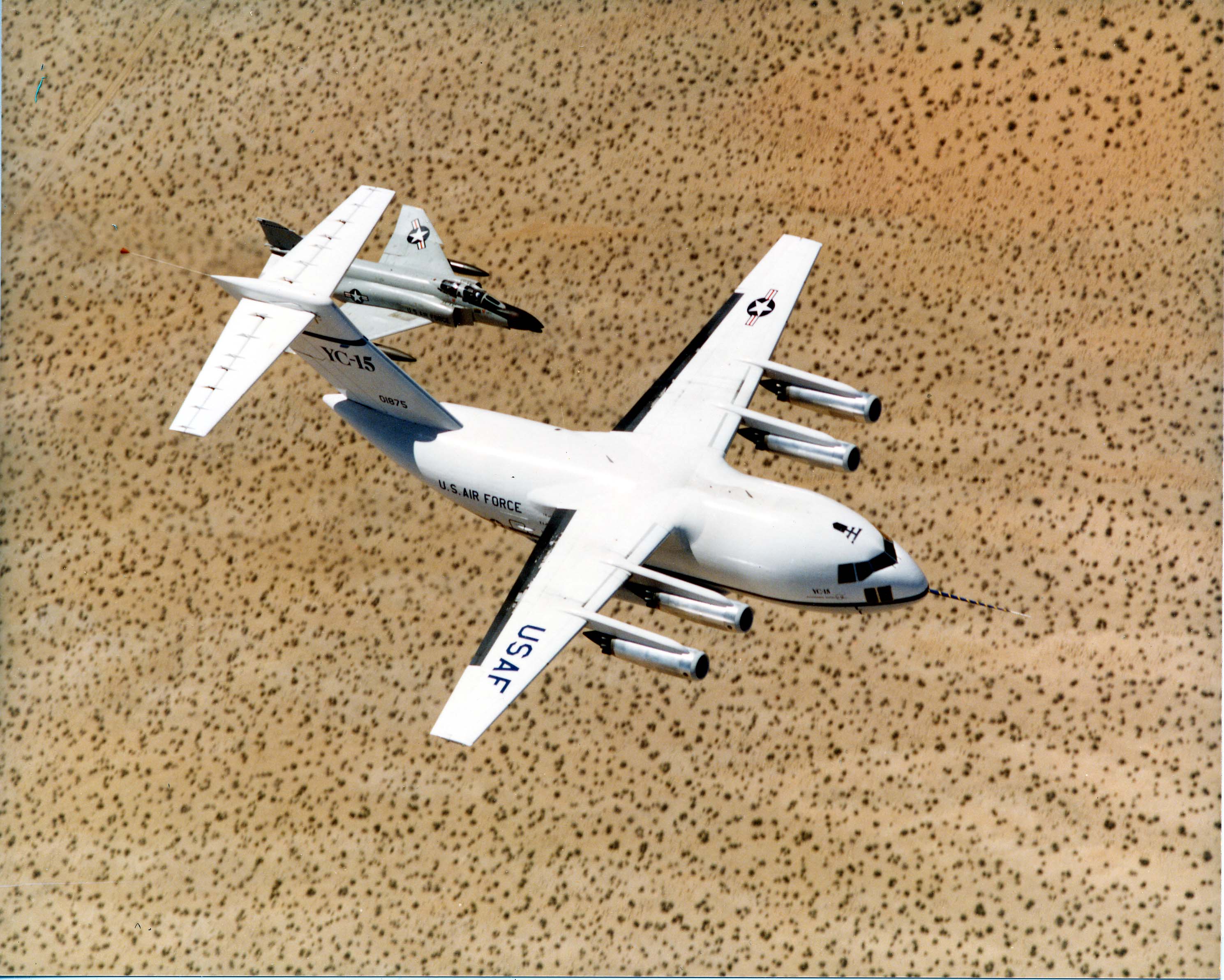|
Convair NC-131H TIFS
The Convair NC-131H Samaritan, also known as the Total In-Flight Simulator (TIFS), is a modified Convair C-131 Samaritan that was used to study aircraft handling characteristics. Built as a C-131B, the aircraft underwent extensive conversion and modification by the United States Air Force, NASA, Calspan and others from the late 1960s until the 2000s. TIFS' maiden flight was in 1970. Design and development The aircraft, at the time, a C-131B transport, was modified with assistance from NASA, into the NC-131B Control Configured Vehicle, a variable stability aircraft. It would go on to experience further modification, being re-engined and re-designated as the NC-131H by the USAF Research Labs (AFRL). The "N" in the designation indicates that the aircraft had been permanently (ergo, extensively) modified. TIFS is hailed by Calspan as a "cost effective and efficient test-bed aircraft" with a "spacious cabin and replaceable nose." its use was intended for programs with large equipm ... [...More Info...] [...Related Items...] OR: [Wikipedia] [Google] [Baidu] |
National Museum Of The United States Air Force
The National Museum of the United States Air Force (formerly the United States Air Force Museum) is the official museum of the United States Air Force located at Wright-Patterson Air Force Base, northeast of Dayton, Ohio. The NMUSAF is the oldest and largest military aviation museum in the world, with more than 360 aircraft and missiles on display. The museum is a central component of the National Aviation Heritage Area. The museum draws about a million visitors each year, making it one of the most frequently visited tourist attractions in Ohio. History The museum dates to 1923, when the Engineering Division at Dayton, Ohio, Dayton's McCook Field first collected technical artifacts for preservation. In 1927, it moved to then-Wright Field in a laboratory building. In 1932, the collection was named the Army Aeronautical Museum and placed in a Works Progress Administration, WPA building from 1935 until World War II. In 1948, the collection remained private as the Air Force ... [...More Info...] [...Related Items...] OR: [Wikipedia] [Google] [Baidu] |
Northrop Grumman B-2 Spirit
The Northrop B-2 Spirit, also known as the Stealth Bomber, is an American Heavy bomber, heavy strategic bomber, featuring low-observable stealth aircraft, stealth technology designed to penetrator (aircraft), penetrate dense anti-aircraft warfare, anti-aircraft defenses. A Subsonic aircraft, subsonic flying wing with a crew of two, the plane was designed by Northrop Corporation, Northrop (later Northrop Grumman) as the prime contractor, with Boeing, Hughes Aircraft Company, Hughes, and Vought as principal subcontractors, and was produced from 1988 to 2000. The bomber can drop conventional weapon, conventional and thermonuclear weapons, such as up to eighty Mark 82 bomb, Mk 82 Joint Direct Attack Munition, JDAM Global Positioning System, GPS-guided bombs, or sixteen B83 nuclear bombs. The B-2 is the only acknowledged in-service aircraft that can carry large air-to-surface missile, air-to-surface Standoff missile, standoff weapons in a stealth configuration. Development began ... [...More Info...] [...Related Items...] OR: [Wikipedia] [Google] [Baidu] |
Allison T56
The Allison T56 is an American single-shaft, modular design military turboprop with a 14-stage axial flow compressor driven by a four-stage turbine. It was originally developed by the Allison Engine Company for the Lockheed C-130 Hercules transport entering production in 1954. It has been a Rolls-Royce plc, Rolls-Royce product since 1995 when Allison was acquired by Rolls-Royce. The commercial version is designated 501-D. Over 18,000 engines have been produced since 1954, logging over 200 million flying hours. Design and development The T56 turboprop, evolved from Allison's previous Allison T38, T38 series, was first flown in the nose of a B-17 test-bed aircraft in 1954. One of the first flight-cleared YT-56 engines was installed in a C-130 nacelle on Lockheed's Super Constellation test aircraft in early 1954. Originally fitted to the Lockheed C-130 Hercules military transport aircraft, the T56 was also installed on the Lockheed P-3 Orion maritime patrol aircraft (MPA), Grumm ... [...More Info...] [...Related Items...] OR: [Wikipedia] [Google] [Baidu] |
Dayton, Ohio
Dayton () is a city in Montgomery County, Ohio, United States, and its county seat. It is the List of cities in Ohio, sixth-most populous city in Ohio, with a population of 137,644 at the 2020 United States census, 2020 census. The Dayton metropolitan area had 814,049 residents and is the state's fourth-largest metropolitan area. Dayton is located within Ohio's Miami Valley region, north of Cincinnati and west-southwest of Columbus, Ohio, Columbus. Dayton was founded in 1796 along the Great Miami River and named after Jonathan Dayton, a Founding Fathers of the United States, Founding Father who owned a significant amount of land in the area. It grew in the 19th century as a canal town and was home to many patents and inventors, most notably the Wright brothers, who developed the first successful motor-operated airplane. It later developed an industrialized economy and was home to the Dayton Project, a branch of the larger Manhattan Project, to develop polonium triggers used in ... [...More Info...] [...Related Items...] OR: [Wikipedia] [Google] [Baidu] |
Cruise Missile
A cruise missile is an unmanned self-propelled guided missile that sustains flight through aerodynamic lift for most of its flight path. Cruise missiles are designed to deliver a large payload over long distances with high precision. Modern cruise missiles are capable of traveling at high Aerodynamics#Incompressible aerodynamics, subsonic, Supersonic speed, supersonic, or Hypersonic speed, hypersonic speeds, are self-navigating, and are able to fly on a non-Ballistics, ballistic, extremely low-altitude trajectory. History The idea of an "aerial torpedo" was shown in the British 1909 film ''The Airship Destroyer'' in which flying torpedoes controlled wirelessly are used to bring down airships bombing London. In 1916, the Americans, American Aircraft pilot, aviator Lawrence Sperry built and patented an "aerial torpedo", the Hewitt-Sperry Automatic Airplane, a small biplane carrying a TNT charge, a Sperry autopilot and barometric altitude control. Inspired by the experiments, the ... [...More Info...] [...Related Items...] OR: [Wikipedia] [Google] [Baidu] |
Martin Marietta
The Martin Marietta Corporation was an American company founded in 1961 through the merger of Glenn L. Martin Company and American-Marietta Corporation. In 1995, it merged with Lockheed Corporation to form Lockheed Martin. History Martin Marietta formed in 1961 by the merger of the Glenn L. Martin Company and American-Marietta Corporation. Martin, based in Baltimore, was primarily an aerospace concern with a recent focus on missiles, namely its Titan (rocket family), Titan program. This program was established in 1955 when the company secured the U.S. Air Force contract to build the country's second intercontinental ballistic missile (ICBM). American-Marietta was headquartered in Chicago and produced paints, dyes, metallurgical products, construction materials, and other goods. In 1982, Martin Marietta was subject to a hostile takeover bid by the Bendix Corporation, headed by William Agee. Bendix bought the majority of Martin Marietta shares and in effect owned the company. Ho ... [...More Info...] [...Related Items...] OR: [Wikipedia] [Google] [Baidu] |
IPTN N-250
The IPTN N-250 was a turboprop regional airliner designed by Indonesian firm IPTN (''Industri Pesawat Terbang Nusantara'') (now Indonesian Aerospace). This aircraft was IPTN's first major effort to win the market share of the regional turboprop class of 64–68 seat airliners. The aircraft's development was eventually terminated after the Asian financial crisis of 1998. Design and development The N-250 development plan was first revealed by PT IPTN (now PT Dirgantara Indonesia, ''Indonesian Aerospace'') at the Paris Air Show in 1989, but was first introduced in 1986 when the Indonesian Air Show 1986 was held. The N-250 was initially described as a propfan commuter plane, but on 12 July 1990, IPTN selected the Allison GMA 2100 turboprop to power the aircraft. In early 1994, Indonesia announced that Great Britain and four states in the United States were interested in hosting production lines for the final assembly of the N-250. In January 1995, IPTN added Long Island, New York ... [...More Info...] [...Related Items...] OR: [Wikipedia] [Google] [Baidu] |
McDonnell Douglas MD-12
The McDonnell Douglas MD-12 was a large wide-body airliner concept planned by the McDonnell Douglas company in the 1990s. It was first conceived as a trijet larger than the MD-11, then stretched to a quadjet airliner. It was to be similar in size to the Boeing 747, but with greater passenger capacity through two full-length passenger decks. However, the MD-12 received no orders and was canceled. McDonnell Douglas then studied larger MD-11 derivatives named ''MD-XX'' without proceeding. Design and development Background McDonnell Douglas studied improved, stretched versions of the MD-11 trijet, named MD-12X"MDC brochures for undeveloped versions of the MD-11 and MD-12." md-eleven.net. Retrieved: April 14, 2008. with a possible lower-front passenger deck with panoramic w ... [...More Info...] [...Related Items...] OR: [Wikipedia] [Google] [Baidu] |
Boeing SST
The Boeing 2707 was an American supersonic passenger airliner project during the 1960s. After winning a competition for a government-funded contract to build an American supersonic airliner, Boeing began development at its facilities in Seattle, Washington. The design emerged as a large aircraft with seating for 250 to 300 passengers and cruise speeds of approximately Mach 3. It was intended to be much larger and faster than competing supersonic transport (SST) designs such as the Concorde. The SST was the topic of considerable concern within and outside the aviation industry. From the start, the airline industry noted that the economics of the design were questionable, concerns that were only partially addressed during development. Outside the field, the entire SST concept was the subject of considerable negative press, centered on the issue of sonic booms and effects on the ozone layer. A key design feature of the 2707 was its use of a swing-wing configuration. During devel ... [...More Info...] [...Related Items...] OR: [Wikipedia] [Google] [Baidu] |
Boeing C-17 Globemaster III
The McDonnell Douglas/Boeing C-17 Globemaster III is a large military transport aircraft developed for the United States Air Force (USAF) between the 1980s to the early 1990s by McDonnell Douglas. The C-17 carries forward the name of two previous piston-engined military cargo aircraft, the Douglas C-74 Globemaster and the Douglas C-124 Globemaster II. The C-17 is based upon the McDonnell Douglas YC-15, YC-15, a smaller prototype airlifter designed during the 1970s. It was designed to replace the Lockheed C-141 Starlifter, and also fulfill some of the duties of the Lockheed C-5 Galaxy. The redesigned airlifter differs from the YC-15 in that it is larger and has swept wings and more powerful engines. Development was protracted by a series of design issues, causing the company to incur a loss of nearly US$1.5 billion on the program's development phase. On 15 September 1991, roughly one year behind schedule, the first C-17 performed its maiden flight. The C-17 formally entered USAF ... [...More Info...] [...Related Items...] OR: [Wikipedia] [Google] [Baidu] |
Northrop YF-23
The Northrop/McDonnell Douglas YF-23 is an American single-seat, twinjet, twin-engine, Stealth aircraft, stealth fighter aircraft, fighter technology demonstrator prototype designed for the United States Air Force (USAF). The design team, with Northrop as the prime contractor, was a finalist in the USAF's Advanced Tactical Fighter (ATF) demonstration and validation competition, battling the Lockheed YF-22, YF-22 team for full-scale development and production. Nicknamed "Black Widow II", two YF-23 prototypes were built. In the 1980s, the USAF began looking for a replacement for its McDonnell Douglas F-15 Eagle, F-15 fighter aircraft to more effectively counter emerging threats such as the Soviet Union's advanced Sukhoi Su-27, Su-27 and Mikoyan MiG-29, MiG-29 fighters. Several companies submitted design proposals; the USAF selected proposals from Northrop Corporation, Northrop and Lockheed Corporation, Lockheed for demonstration and validation. Northrop teamed up with McDonnell ... [...More Info...] [...Related Items...] OR: [Wikipedia] [Google] [Baidu] |









